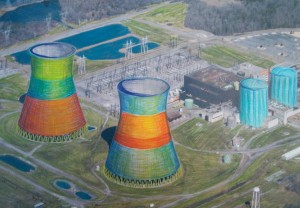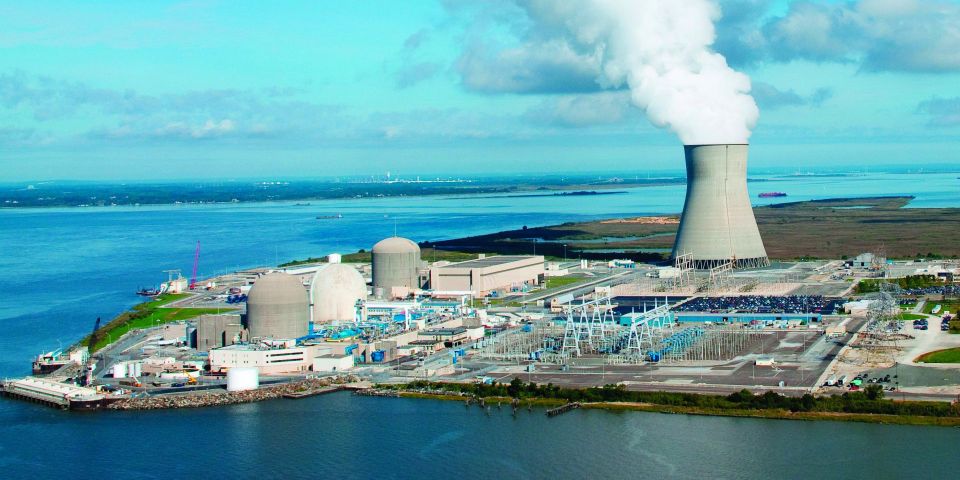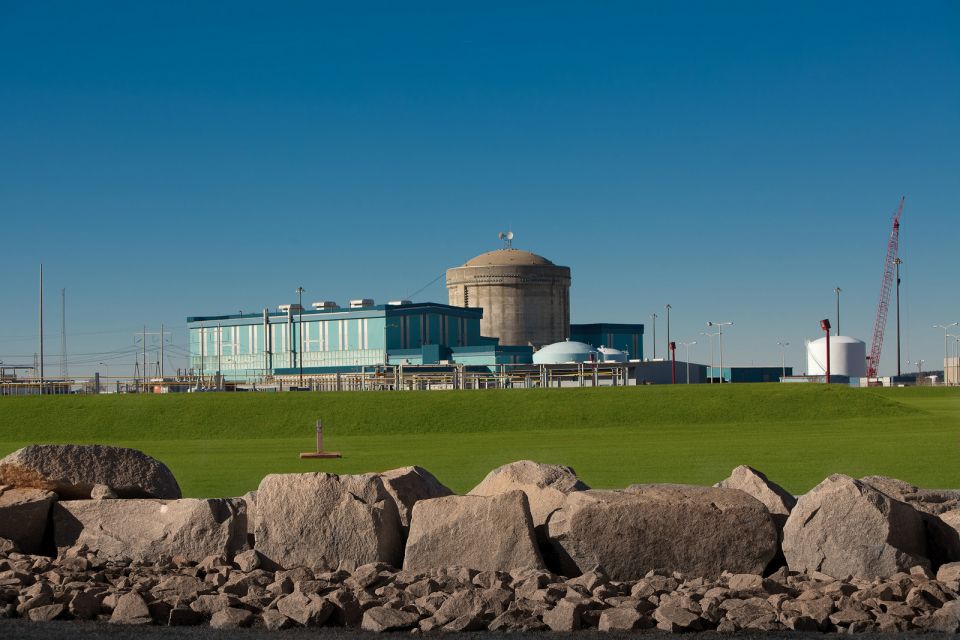Areva to complete TVA's Bellefonte
The French nuclear giant will get its chance to show what it can do with an American reactor

TVA's Bellefonte plant envisioned as complete by Suzy Hobbs with colorized cooling towers. Source: Popatomic Studios.
Areva will serve as a key member of the team of contract partners to complete the 1260-MW Bellefonte nuclear reactor owned by the Tennessee Valley Authority (TVA). Located in Scottsboro, Ala., work on the plant was halted in the late 1980s due to low electricity demand. In August of this year, the TVA board voted to finish it. The decision followed a two-year engineering and cost evaluation.
Areva's scope includes engineering, construction, and replacement of many of the components that were removed from the plant when work stopped more than two decades ago. TVA estimates that the plant, which includes a reactor pressure vessel, is about 55-percent complete.
Areva will supply a digital reactor instrumentation-and-control system, a completely modernized control room, and a plant simulator to train reactor operators. In addition, Areva will supply fuel design and fabrication. What makes it possible to complete the plant is that the reactor pressure vessel, containment building, and cooling towers are already in place.
$1 billion in work scope
In a conference call with nuclear energy bloggers on September 16, Areva chief operating officer Mike Rencheck said that the value of the work scope for TVA is about $1 billion out of the estimated $4.9 billion that it will take to complete the reactor, which is scheduled to enter revenue service in 2020.
Rencheck said that Areva has signed contracts for the nuclear island and the steam system. Balance-of-plant components, such as turbines and generators, are still in the procurement process and will most likely come from other suppliers.
"It looks like a great facility to operate," Rencheck said. "It is built for maintenance. There's lots space to work and lay parts out."
The original containment building is in place, with three-and-a-half foot thick walls, as are cooling towers. Along with these assets, and the reactor pressure vessel, Areva estimates that about $2 billion of the $4.9 billion in costs are already built.
TVA is completing the plant by using the old Nuclear Regular Commission Part 50 two-step licensing process, which first grants a license to construct a reactor and then one to operate it. Rencheck pointed out that this is the same process being used at TVA's Watts Bar-2, which will be completed and will enter revenue service in summer 2013.
Digital control room
Areva is particularly proud of earning NRC certification of its software for the digital control room. Bellefonte will be the second digital control system that Areva will install; the first being at Duke Energy's Occone plant in South Carolina.
Rencheck emphasizes that the B&W "177 reactor design" is a "proven technology," and called Areva's plans to modernize the plant "an evolution, not a revolution."
Areva CEO visits TVA
The kick-off of the contract work is an important milestone for Areva, which has been frustrated by setbacks in its efforts to ink a deal for one of its 1600-MW EPR reactors in the United States.
The significance of the new TVA work was underscored by the visit of newly installed Areva chief executive officer Luc Oursel to the Bellefonte site last week.
Oursel called the Bellefonte project one of the largest that Areva is involved with anywhere and he said that when completed it will be "one of the most modern and safest facilities in the world."
He added that Areva's work at TVA is similar to a project in Brazil where the firm is completing that nation's third nuclear reactor. See fact box below.
Areva COO Rencheck told the blogger conference call that construction-related employment at the Bellefonte plant will be about 2800 people, and that once completed, staffing plans indicate 650 permanent high-paying jobs will be needed to run it.
TVA's decision to complete Bellefonte is part of its 20-year Integrated Resource Plan. That document lays out a future where the utility will be removing greenhouse gas-emitting coal-fired plants and replacing them with clean energy technologies including nuclear reactors.
Areva in Brazil a model for TVA?
Brazil has two nuclear reactors at the Angra site near Rio de Janeiro-Angra-1 (626 MW, commissioned in 1985) and Angra-2 (1270 MW, commissioned in 2001). Areva constructed Angra-2 and supplied a large portion of the Angra-3 equipment (1394 MW).
 In December 2008, Areva and the Brazilian utility company, Eletronuclear, signed a draft agreement relating to the industrial collaboration of both groups. Areva and Eletronuclear also signed maintenance agreements for Angra-1 and -2 in June 2008, as well as a service agreement for the Angra-1 reactor in late 2008.
In December 2008, Areva and the Brazilian utility company, Eletronuclear, signed a draft agreement relating to the industrial collaboration of both groups. Areva and Eletronuclear also signed maintenance agreements for Angra-1 and -2 in June 2008, as well as a service agreement for the Angra-1 reactor in late 2008.
In 2009, the local building permit was issued to recommence the Angra-3 project and the civil works were begun. Areva signed an addendum to its contract for the engineering services, and also received an order to provide project management services for the operation.
In May 2010, the National Nuclear Energy Commission granted a license for construction of the third reactor at Angra. Construction of the reactor-with capacity of 1270 MWe-begun in June 2010 and it should be operational by 2015.
According to the World Nuclear Association, Brazil is considering the Westinghouse AP1000 and Areva's Atmea reactor for possible future power station developments. Both designs come in at 1100 MW.
____________
Dan Yurman publishes Idaho Samizdat, a blog about nuclear energy, and is a frequent contributor to ANS Nuclear Cafe.










